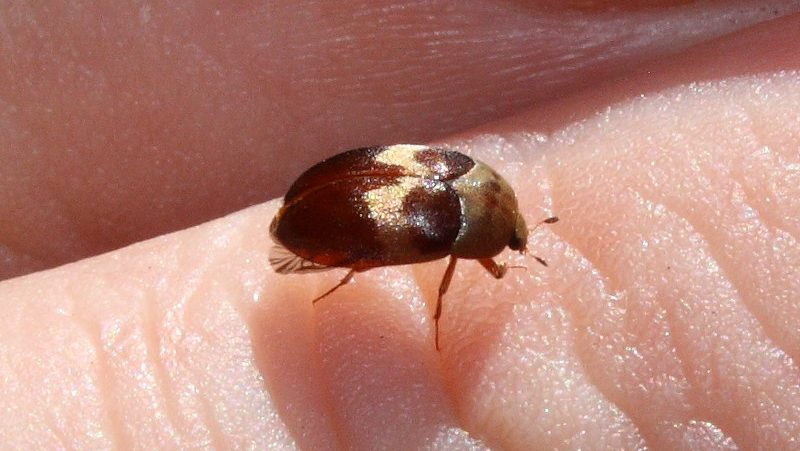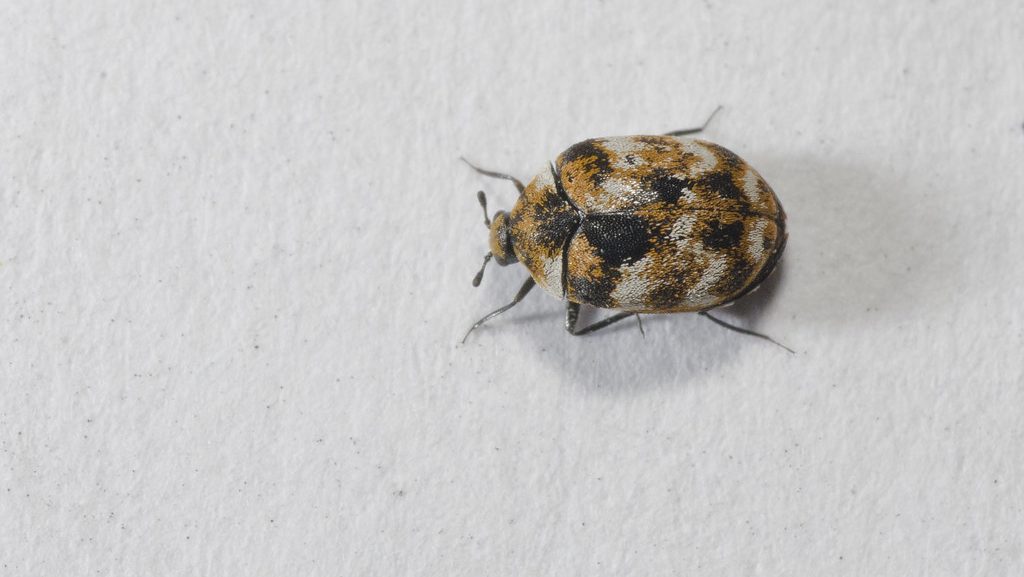Key Takeaways
- Carpet beetle rash is an allergic reaction to larval hairs.
- Prevent rashes by vacuuming and storing fabrics properly.
- Use aloe vera, oatmeal, or calamine lotion to soothe symptoms.
 Carpet beetles, a common household pest, can cause significant discomfort when they invade homes. While they are known for damaging fabrics and furniture, another lesser-known issue is the rash they can cause. Understanding carpet beetle rash, its causes, treatment, and prevention methods can help you manage this problem effectively.
In this article, we’ll explore what carpet beetle rash looks like, its symptoms, treatment options, and prevention strategies.
Carpet beetles, a common household pest, can cause significant discomfort when they invade homes. While they are known for damaging fabrics and furniture, another lesser-known issue is the rash they can cause. Understanding carpet beetle rash, its causes, treatment, and prevention methods can help you manage this problem effectively.
In this article, we’ll explore what carpet beetle rash looks like, its symptoms, treatment options, and prevention strategies.


Not getting a solution?
Get your free pest control estimate today!What Is a Carpet Beetle Rash?
A carpet beetle rash is a skin irritation resulting from an allergic reaction to the tiny hairs shed by carpet beetle larvae. These microscopic hairs, called setae, are barbed structures that can easily embed in the skin. When these hairs come into contact with the skin, they trigger the immune system, resulting in redness, itching, and small bumps that can resemble insect bites or other skin conditions. The rash itself is not caused by bites, as carpet beetles do not bite humans. Instead, it occurs due to contact with these allergenic fibers, which can irritate sensitive skin. The reaction is more common in individuals who are predisposed to allergies or who frequently come into contact with infested materials such as carpets, furniture, or clothing. To prevent these infestations in your home you can contact our Pest Control Expert for hassle free pest inspection.What Causes Carpet Beetle Rash?
The primary cause of carpet beetle rash is an allergic reaction to the hairs and bristles on the larvae of carpet beetles. These tiny hairs can become airborne and contact the skin, causing irritation. People with sensitive skin or those allergic to these hairs are more likely to develop a rash. Contact with infested materials, such as carpets, clothing, or upholstered furniture, can also exacerbate the reaction.
What Does Carpet Beetle Rash Look Like?
The appearance of a carpet beetle rash can vary slightly from person to person, but the most common characteristics include:Physical Appearance of Carpet Beetle Rash
-
Small Red Bumps: These bumps are often grouped in clusters or lines, following the path of contact with the larvae hairs.
-
Itchy Skin: The rash typically causes persistent itching, leading to further irritation.
-
Localized Redness: The affected areas may appear red or inflamed, especially if scratched.
-
Exposed Areas: Rashes are commonly found on arms, neck, shoulders, or other exposed parts of the body.
What Are Symptoms of Carpet Beetle Rash?
Carpet beetle rash can cause significant discomfort, often resembling other skin conditions like insect bites. Recognizing the symptoms is key to managing the irritation and addressing the underlying cause. Here’s a closer look at the common signs and sensations associated with a carpet beetle rash.Symptoms of Carpet Beetle Rash
-
Intense Itching: Persistent itching is a hallmark symptom and can lead to skin damage from scratching.
-
Burning Sensation: Some individuals report a mild burning or stinging feeling in the affected area.
-
Secondary Infections: Excessive scratching can create open wounds, increasing the risk of bacterial infections.
-
Allergic Reactions: In severe cases, individuals may experience additional allergic symptoms like watery eyes or runny nose.

Treatment for Carpet Beetle Rash
- Treating carpet beetle rash involves identifying the symptoms and addressing the underlying cause. Below are some effective chemical and natural ways to treat carpet beetle rash and manage the discomfort:
-
Clean the Skin: Wash the affected area gently with soap and water to remove allergens. Avoid hot water to reduce irritation.
-
Aloe Vera Gel: Apply pure aloe vera gel to cool the skin and reduce inflammation and itching.
-
Apple Cider Vinegar: Use a diluted apple cider vinegar solution to calm irritation and prevent infections.
-
Oatmeal Paste: Apply a paste made of ground oatmeal and water to soothe itching and moisturize the rash.
-
Coconut Oil: Massage virgin coconut oil into the rash to benefit from its anti-inflammatory and healing properties.
-
Apply Calamine Lotion: Use calamine lotion to relieve itching and reduce redness—let it dry on the skin.
-
Use Antihistamines: Apply OTC antihistamine creams to manage allergic reactions and itching. Follow label directions.
-
Moisturize: Keep the area hydrated with a gentle, fragrance-free moisturizer to prevent dryness.
-
Avoid Scratching: Prevent further irritation and infection by avoiding scratching. Use gloves at night if needed.

Tips to Prevent Carpet Beetle Rashes
Allergic reactions to the hairs of carpet beetle larvae cause carpet beetle rashes. Preventing these rashes involves keeping your home free from infestations and minimizing exposure to allergens. Here are effective preventive measures:Preventive Measures for Carpet Beetle Rashes
-
Vacuum frequently to clean carpets, rugs, and furniture, focusing on edges and corners.
-
Store clothing and linens in airtight containers to protect against beetles.
-
Wash fabrics in hot water and dry thoroughly before storage.
-
Inspect for signs of carpet beetles like larvae, shed skins, or fabric holes.
-
Seal cracks and gaps around windows, doors, and baseboards to block entry.
-
Maintain cleanliness by removing dust and food debris that attract beetles.

How Are Carpet Beetle Bites Different From Bed Bug Bites?
- Carpet beetle rash looks very similar to rashes caused by bed bug bites. The following signs can help you differentiate between the two:
-
Pattern: Carpet beetle rashes appear in irregular clusters, while bed bug bites are usually in straight lines or grouped evenly.
-
No Bite Marks: Carpet beetle rashes lack a central puncture mark, which is typically seen in bed bug bites.
-
Allergic Reaction Symptoms: Carpet beetle rashes may involve swelling or burning sensations, indicating an allergic reaction—unlike most bed bug bites.
Myths and Facts About Carpet Beetle Rash
There are many myths about carpet beetle rash that can make it difficult to recognize and treat the condition. Finding the truth behind these myths is essential to controlling carpet beetle-related rashes.| Preventive Measure | Description |
|---|---|
| Vacuum Frequently | Regularly clean carpets, rugs, and upholstered furniture to remove larvae and their hair. Focus on edges, corners, and under furniture. |
| Store Items Properly | Keep clothing, linens, and other susceptible items in airtight containers to protect them from beetles. |
| Wash and Dry Thoroughly | Wash fabrics in hot water and dry them completely before storing them to eliminate allergens. |
| Inspect for Signs | Check for signs of carpet beetles, such as larvae, shed skins, or small holes in fabrics. |
| Seal Entry Points | Close cracks and gaps around windows, doors, and baseboards to prevent beetles from entering your home. |
| Maintain Cleanliness | Keep your home free of dust and food debris that can attract carpet beetles. |





